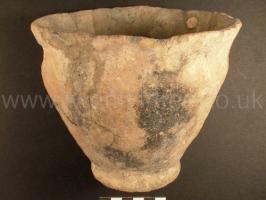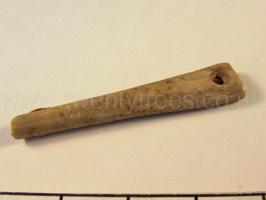Text this colour links to Pages. Text this colour links to Family Trees. Text this colour are links that are disabled for Guests.
Place the mouse over images to see a larger image. Click on paintings to see the painter's Biography Page. Mouse over links for a preview. Move the mouse off the painting or link to close the popup.
Winterbourne Stoke East Barrows is in Winterborne Stoke Barrows.
Colt Hoare 1812. In the barrows No. 1 [Winterbourne Stoke East Barrow 1 G60 [Map]] and No. 2 [Winterbourne Stoke East Barrow 2 G59 [Map]], the rites of cremation had been practised, but no circumstances worthy of any particular detail occurred.
Colt Hoare 1812. In the barrows No. 1 [Winterbourne Stoke East Barrow 1 G60 [Map]] and No. 2 [Winterbourne Stoke East Barrow 2 G59 [Map]], the rites of cremation had been practised, but no circumstances worthy of any particular detail occurred.
Colt Hoare 1812. No. 3 [Winterbourne Stoke East Barrow 3 G59a [Map]] and No. 4 [Winterbourne Stoke East Barrow 4 G58 [Map]] had been opened by shepherds, and contained interments of burned bones. In the former was found a little cup. which Mr. Gunnington purchased.

Wiltshire Museum. DZSWS:STHEAD.276. 1 food vessel with no decoration, found with a primary cremation in bowl barrow Winterbourne Stoke G59a [Map], excavated by William Cunnington.
Colt Hoare 1812. No. 3 [Winterbourne Stoke East Barrow 3 G59a [Map]] and No. 4 [Winterbourne Stoke East Barrow 4 G58 [Map]] had been opened by shepherds, and contained interments of burned bones. In the former was found a little cup. which Mr. Gunnington purchased.

Wiltshire Museum. DZSWS:STHEAD.70d. 1 bone pin with flat head and bevelled perforation (broken in half) found with a primary cremation in bowl barrow Winterbourne Stoke G58 [Map], excavated by William Cunnington.

Wiltshire Museum. DZSWS:STHEAD.82. 1 miniature cup (incense cup?) without decoration found with a primary cremation in bowl barrow Winterbourne Stoke G58 [Map], excavated by William Cunnington.
Colt Hoare 1812. No. 5 [Winterbourne Stoke East Barrow 5 G58a [Map]] contained an urn very imperfectly baked, and within it an interment of burned bones, and a very small arrow head of bone.
Colt Hoare 1812. No. 6 [In Winterbourne Stoke East Barrow 6 G55a [Map]] the ceremony of burning had been adopted.
Colt Hoare 1812. No. 7 [Winterbourne Stoke East Barrow 7 G56 [Map]]. This large barrow produced three interments. At the depth of four feet and a half, we discovered the skeleton of an infant, with its head laid towards the south; and immediately beneath it, a deposit of burned bones, and a drinking cup, which was unfortunately broken. At the depth of eight feet, and in the native bed of chalk, we came to the primary interment, viz. the skeleton of a man lying from north to south, with his legs gathered up according to the primitive custom. On his right side, and about a foot or more above the bones, was an enormous stag's horn. This was certainly the original deposit; chough we find the same mode of interment, as well as cremation adopted at a subsequent period near the surface of the barrow.
Wiltshire Museum. DZSWS:STHEAD.71a. 1 fragment of red deer antler found with a primary inhumation in bowl barrow Winterbourne Stoke G56 [Map], excavated by William Cunnington.
Colt Hoare 1812. No. 8 [Winterbourne Stoke East Barrow 8 G57 [Map]] is a large old-fashioned bowl-shaped tumulus, the base diameter being nearly one hundred feet. It contained a skeleton lying on the floor with its bead towards the north, and much decayed from its having been covered with vegetable earth. Mr. Cunnington, supposing that this barrow contained more interments, made a second trial, but procured no further information.
All About History Books
The Deeds of King Henry V, or in Latin Henrici Quinti, Angliæ Regis, Gesta, is a first-hand account of the Agincourt Campaign, and subsequent events to his death in 1422. The author of the first part was a Chaplain in King Henry's retinue who was present from King Henry's departure at Southampton in 1415, at the siege of Harfleur, the battle of Agincourt, and the celebrations on King Henry's return to London. The second part, by another writer, relates the events that took place including the negotiations at Troye, Henry's marriage and his death in 1422.
Available at Amazon as eBook or Paperback.
Colt Hoare 1812. The remaining three barrows within this enclosure, viz. 9 [Map], 10 [Map], 11 [Map], which have before mentioned as being placed nearly at equal distances from the vallum, and forming a kind of triangle, afforded, on opening, no one appearance of sepulchral remains; and for what purpose they could have been raised, it is impossible for me to determine; it is rather singular that eiÜht out of the eleven tumuli which are enclosed within this work should have each proved sepulchral, and these not so.
Colt Hoare 1812. The remaining three barrows within this enclosure, viz. 9 [Map], 10 [Map], 11 [Map], which have before mentioned as being placed nearly at equal distances from the vallum, and forming a kind of triangle, afforded, on opening, no one appearance of sepulchral remains; and for what purpose they could have been raised, it is impossible for me to determine; it is rather singular that eiÜht out of the eleven tumuli which are enclosed within this work should have each proved sepulchral, and these not so.
Colt Hoare 1812. The remaining three barrows within this enclosure, viz. 9 [Map], 10 [Map], 11 [Map], which have before mentioned as being placed nearly at equal distances from the vallum, and forming a kind of triangle, afforded, on opening, no one appearance of sepulchral remains; and for what purpose they could have been raised, it is impossible for me to determine; it is rather singular that eiÜht out of the eleven tumuli which are enclosed within this work should have each proved sepulchral, and these not so.